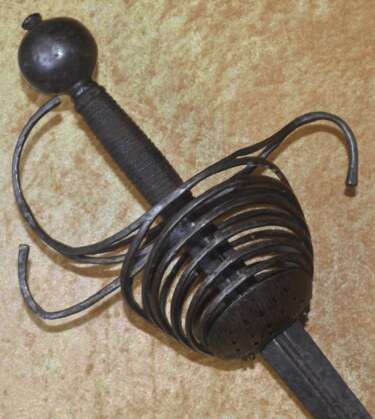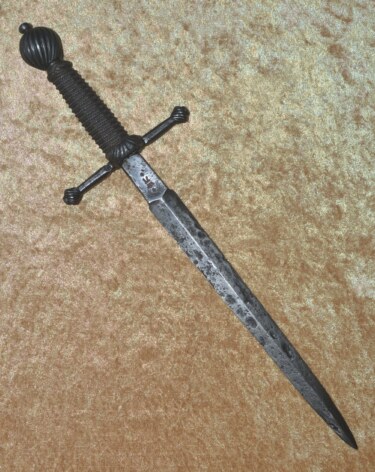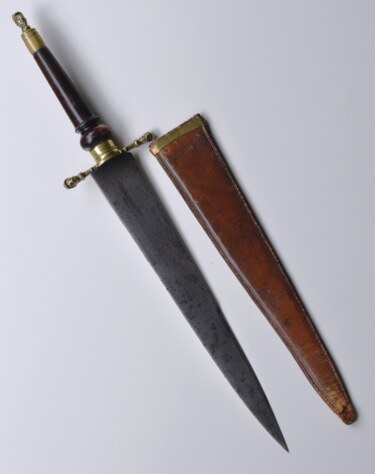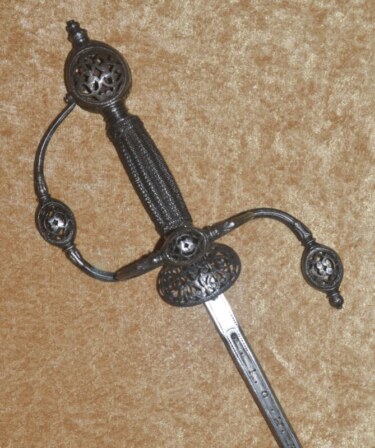Description
Very rare version of the estoc, used in areas of Austria and Hungary bordering the Ottoman
Empire. These were carried by Austrian harquebusiers and Hungarian hussars on
horseback in the wars with the Turks. Identical examples featured in the Landeszeughaus
in Graz, Austria. Distinctive hand forged iron guard featuring ring quillions with ball finials
and a flat octagonal plate, the rear with down-turned triangular extension; integral cap at the
quillion block with pierced quatrefoil decoration covering the ricasso to keep water out of the
scabbard, as found on other swords in Graz. This was the forerunner of the modern
scabbard throat, being attached to the hilt rather than the scabbard. Spirally fluted pear-
shaped pommel with button; grip wrap of twisted brass wire with Turks heads top and
bottom. This type generally has a leather-wrapped grip, but the peen on the pommel
appears undisturbed. Extraordinarily long and stiff 48 7/8″ triangular-section blade with
incised running wolf mark on two faces; the obverse faces slightly convex, while the rear
face is slightly concave. Narrow 5 ½” fuller on the central ridge. Leather-bound wood
scabbard with iron mounts, consisting of two bands with carry rings and a long multi-piece
drag. Scabbard shows age and wear and appears to be the original. Very good, complete
condition; the blade pitted overall, iron parts with dark rust patina. Overall length 55″. Such
swords were only used on horseback and used as a lance, with the scabbard strapped to
the side of the saddle. It is likely that this sword was at one time kept in the
Landeszeughaus (regional arsenal) Graz. A similar example sold at auction in London in
2008 for nearly $14,000.
ON HOLD














 Italian 6-ring Rapier, ca. 1620
Italian 6-ring Rapier, ca. 1620  Left Hand Dagger, Early 17th C, Probably German
Left Hand Dagger, Early 17th C, Probably German  English Helmet-head Plug Bayonet, Last Quarter 17th C
English Helmet-head Plug Bayonet, Last Quarter 17th C  Fine and Unique Chiseled European Rapier, First Half 17th C
Fine and Unique Chiseled European Rapier, First Half 17th C